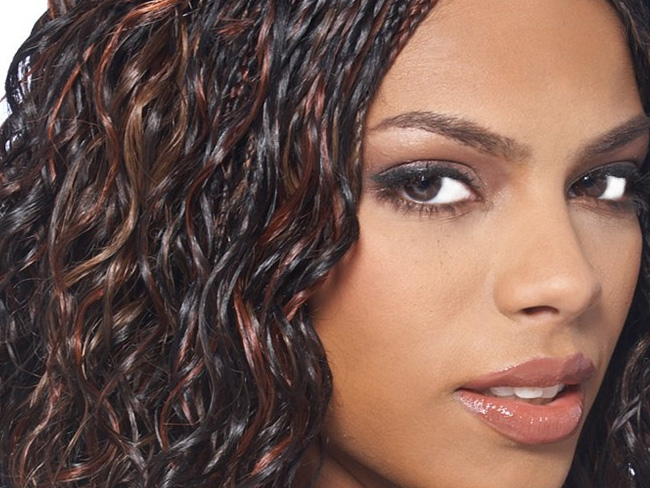7’s to Great Perms
A permanent wave can be used to add curl, body, manageability and volume to your hair. This can make a remarkable improvement in your total image, diversify your styling options, and shorten the length of time you need to spend on your hair to have it look great. Whether you are interested in a subtle […]

A permanent wave can be used to add curl, body, manageability and volume to your hair. This can make a remarkable improvement in your total image, diversify your styling options, and shorten the length of time you need to spend on your hair to have it look great.
Whether you are interested in a subtle wave to add body or want to try an entirely new look, adding a permanent wave to your hair can make the difference. Remember, hair is the accessory you wear every day.
Fill out the Clues To Making Your Vision a Reality Check List before you go to the next section. Bring this check list with you when you come in for your consultation.
Understanding the 7 Elements of Your Permanent Wave and how they work to retexturize your hair, then integrating them with the goals you defined on your checklist, is essential to achieving the look you want.
The 7 Elements of Your Permanent Wave:
The first 3 elements of the permanent wave are natural elements, because they are integral to your natural hair. We have to alter different parts of the permanent wave process to work with these natural elements:
1. Disulphide Bonds
2. Hair Strand Dimensions
3. Quantity of Hair
The last 4 elements are controllable because we can alter various aspects to help achieve the results we want.
4. Roller Size
5. Solution
6. Timing
7. After-Care
Method One: Disulphide Bonds – A Natural Element
Each hair strand has 3 basic parts – the cuticle, the cortex and the medulla. The cortex, or the center of the hair, contains disulphide bonds, an integral part of the protein complex which hair is made of. These bonds are comprised of pairs of atoms that break apart and come back together during the permanent wave process.
Darker and thicker strands of hair tend to contain more disulphide bonds, and lighter, thinner strands contain fewer. If you have more disulphide bonds in your hair, we will have to work more diligently so the permanent wave maintains the amount of wave you want. If you have less, we will take a more delicate approach.
Method Two: Hair Strand Dimensions – A Natural Element
The dimensions of your individual hair strands are also a determining factor in how diligent or delicate we need to make your personal permanent wave process.
The larger the dimension of the strand, the thicker and stronger the hair. This requires a more diligent approach than we will take with finer hair strands. Coloring your hair can also change the natural dimension of the hair strand.
Method Three: Quality of Hair – A Natural Element
Determining the number of hair strands that we place on each roller is also crucial in achieving the size and tightness of the curls or wave.
Method Four: Roller Size – A Controllable Element
Generally, the larger the roller, the looser the wave. Your David Groshen Salon retexturizing expert will take into consideration the hair goals that you defined through your checklist and analyze the compatibility between that and your natural elements (Disulphide bonds, strand size, and quantity of hair).
Method Five: The Solution – A Controllable Element
Perm solution is responsible for the retexturizing process that breaks apart the disulphide bonds and brings them back together in their new form: the shape and size of the roller. We make the choice from a variety of aggressive and buffered solutions.
Method Six: Timing – A Controllable Element
Timing is everything. Predetermining the shortest amount of time that it could take for the perm solution to properly work is key. We start then to check the “bounce” by unrolling a roller and flicking the strands of hair with our finger. If the solution is not left on long enough, your perm will not take. If left on too long it can be a ball of frizz.
Method Seven: After Care – A Controllable Element
Even though the perming process seems complete when you have left the salon, the disulphide bonds continue to re-form for 2 or 3 days. It is important that the hair is not shampooed during this time. Interruption of the bonding process can lead to the perm falling and/or hair breakage. It is OK to wet and gently pat your hair dry with a towel during this crucial time period.
You can rejuvenate your permanent wave by maintaining your haircut to give perm renewed life after 3 weeks or so. Ask your stylist when to schedule your next trim.








